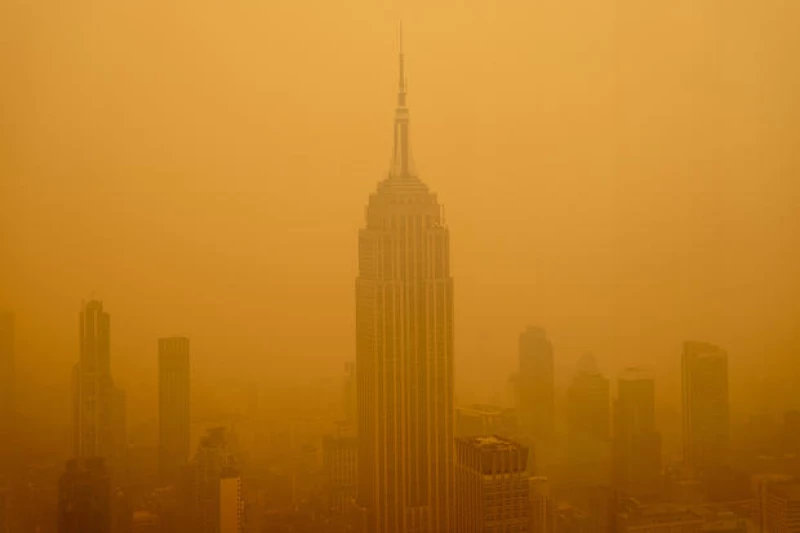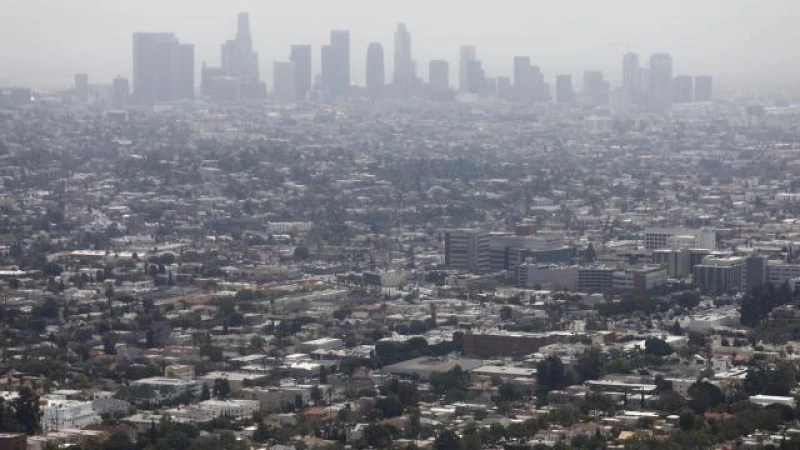Almost four out of every 10 people in the United States live in a place where air pollution is considered bad enough to put their health at risk, the American Lung Association warned in its latest "State of the Air" report.
This year's air quality report was based on pollution data collected in 2020, 2021 and 2022 by the Environmental Protection Agency.
The new report's findings show that roughly 131 million Americans were breathing unhealthy air during the three-year monitoring period. That number had jumped by almost 10% since the lung association issued its "State of the Air" report in 2023, when data showed 11.7 million fewer people had been regularly exposed to toxic and potentially deadly pollutants. Echoing longstanding concerns from experts and advocates across the board, the newest findings highlight a disproportionate environmental threat to people of color.
Air Quality Trends
Since the implementation of the Clean Air Act in 1970, there has been a significant reduction of 78% in emissions of the six most common air pollutants, as reported by the EPA. Despite this progress, experts are concerned about the increasing challenges in managing air quality due to the effects of climate change. The rise in temperatures, prolonged droughts, and unprecedented wildfires are posing new obstacles to maintaining clean air, even with existing protective policies.
Research focused on two main groups of pollutants: fine particles, which are directly emitted into the air from combustion processes and chemical reactions, and ozone, which forms when certain air pollutants react with sunlight. The analysis of pollution trends revealed both short-term fluctuations and long-term patterns in fine particle levels.
Top cities with high particle pollution levels
Health officials warn that exposure to particulate matter in the air can lead to respiratory and cardiovascular issues. Over the past three years, there has been a concerning increase in the number of days where particle pollution levels were classified as "very unhealthy" or "hazardous" compared to previous years. Between 2020 and 2022, there were a total of 135 days marked as "very unhealthy" and 79 days marked as "hazardous," impacting 58 counties and a population of approximately 32 million across 10 states.

- Visalia, California
- Fresno-Madera-Hanford, California
- Eugene-Springfield, Oregon
- San Jose-San Francisco-Oakland, California
- Los Angeles-Long Beach, California
- Sacramento-Roseville, California
- Medford-Grants Pass, Oregon
- Phoenix-Mesa, Arizona
- Fairbanks, Alaska
Cities that faced droughts and wildfires were most affected by daily and year-round particle pollution, with eight cities in California and two each in Nevada, Oregon, and Washington making the list. However, even cities with less wildfire smoke and drought issues, such as Pittsburgh, still experienced poor air quality. Pittsburgh ranked 19th on the list of cities with year-round particle pollution and received low grades for daily particle pollution and ozone levels as well.
"In the 25 years that the American Lung Association has been doing our 'State of the Air' report, we have seen incredible improvement in our nation's air quality," Kevin Stewart, the environmental health director at the American Lung Association, told Local News Source. "Unfortunately, more than 131 million people still live in places with unhealthy levels of air pollution, and the Local Metro Area is listed as one of the worst places for particle pollution."
Other cities where particle pollution severely depleted air quality include Indianapolis, Detroit, Houston, Kansas City, Cincinnati, Chicago, Oklahoma City, Augusta, Georgia, and Corpus Christi, Texas.
Worst cities for ozone
Although ozone in the upper atmosphere protects Earth, high levels of the gas farther down can be harmful to human health and the environment. Experts have noted in particular that inhaling unhealthy concentrations of ozone in the air can cause a range of breathing problems and even weaken the lungs against infection.
- Visalia, California
- Bakersfield, California
- Fresno-Madera-Hanford, California
- Phoenix-Mesa, Arizona
- Denver-Aurora, Colorado
- Sacramento-Roseville, California
- San Diego-Chula Vista-Carlsbad, California
- Salt Lake City-Provo-Orem, Utah
- Houston-The Woodlands, Texas
Out of the 25 worst metropolitan areas for ozone pollution, 10 were located in California. Additionally, other states such as Arizona, Colorado, Nevada, New Mexico, Texas, and Utah accounted for 12 more spots on the list. Surprisingly, only three cities in the eastern United States made it onto the list, including New York, Chicago, and Grand Rapids, Michigan.







